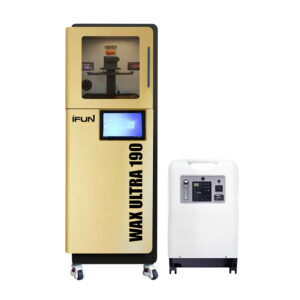This article introduces what a resin 3D printer, including their working principle, structure, resin characteristics, and differences from other 3D printing technologies.
Overview of Resin 3D Printers
Resin 3D printers are a type of equipment in additive manufacturing technology, mainly manufacturing items layer by layer by curing liquid photosensitive resin.
I. The relationship and differences between resin 3D printers and other 3D printing technologies
There are various 3D printing technologies, such as hot melt lamination (FDM), light curing, inkjet, powder gypsum molding, powder sintering molding, etc. Resin 3D printers use the principle of light curing for printing work. Unlike hot melt lamination (FDM), which uses thermoplastic resins and extrudes materials layer by layer by heating, resin 3D printers utilize the curing characteristics of photosensitive resins under specific light sources. For example, materials used in FDM technology, such as ABS or PLA resins, are extruded by dissolving the resin through a nozzle heater, while resin 3D printers put liquid photosensitive resins into a can and solidify them through the action of a light source. The inkjet method is to inject and print liquid resin, and then cut it into a specified thickness layer. It is also significantly different from the light-curing molding principle of resin 3D printers.
II. the basic structure and components of the resin 3D printer
- Light source
This is a key component of a resin 3D printer. According to the different light sources used, it can be divided into various types. For example, in SLA (stereoscopic light curing molding technology) technology, laser irradiation of photosensitive resin is used. The laser head scans each layer of model section in sequence from point to line and then to surface according to the G code generated by the model slice. The photosensitive resin irradiated by the laser quickly solidifies.
The light source of DLP (Digital Light Processing) technology comes from a projector. The projector irradiates a cut surface of a model as a flat image onto the liquid resin to solidify it. In this way, one surface is formed each time, and the printing time depends only on the layer height of the object to be printed.
- Build platform (or generate board)
It is the basic platform for manufacturing objects. During the printing process, resin 3D printers can construct objects normally or upside down depending on the position of the parts and whether the construction platform falls or rises. Upside-down orientation is more common on desktop devices because it is easier to operate and ensure quality without loss of quality. However, in this way, printing adhesion and support structure are crucial to prevent parts from falling due to gravity.
- Resin tank
Used for storing printing materials such as photosensitive resin. The resin waits for the light source to cure in a jar. Different types of resins have different properties, such as strength, hardness, flexibility, and heat resistance. When printing items with different requirements, it is necessary to choose the appropriate resin material.
III. Characteristics of the resin material used
- Photosensitivity
Photosensitive resin is the main material of resin 3D printers, and its biggest feature is its sensitivity to light. When exposed to specific wavelengths of light (such as ultraviolet light), a photopolymerization reaction occurs, transforming from a liquid state to a solid state. This photopolymerization reaction is the basis of resin 3D printing, allowing printers to cure resin layer by layer to construct objects. For example, in SLA printers, laser irradiation promotes rapid solidification of photosensitive resin.
- Variety and performance differences
There are standard resins and advanced resins. Standard resins have good surface finish and moderate mechanical properties, such as resins with properties similar to ABS (zABS) and resins that can be used for real fast printing (zUDP). Advanced resins can be divided into engineering groups, dental groups, and casting types. Engineering resins such as GreyProResin have very good mechanical properties, high geometric accuracy, and good surface finish. Resins in the dental group have biocompatibility certificates and are used to make dental crowns, bridge models, surgical guides, splints, and fixtures, with high accuracy. Casting resins are used to manufacture metal parts through the lost wax process and are widely used in the jewelry field.

